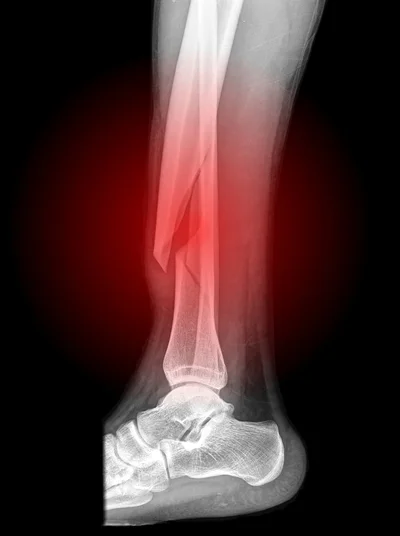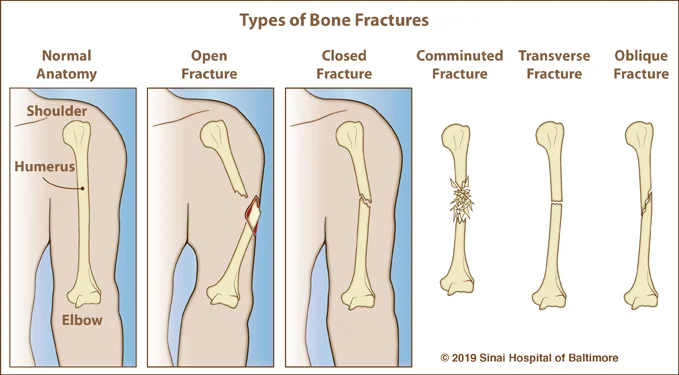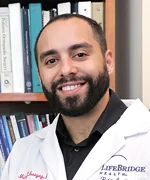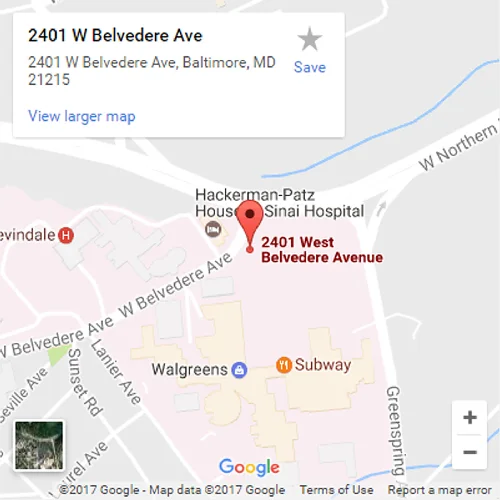Fracture

What is a fracture?
A fracture is the cracking or breaking of a bone. Other names for a fracture include bone bruise, bone crack and broken bone. They all describe the same condition (fracture) but with different degrees of severity.
What are the symptoms of a fracture?
Some symptoms of a broken bone may include:
- Bruising or swelling over the bone
- Pain in the injured area that gets worse when the area is moved or pressure is applied
- Not being able to bear weight on the affected foot or leg
- Loss of function in the injured area
- Deformity of the arm or leg
What are the effects of a fracture?
Fractures can be very painful and can take months to fully heal. Physically, patients’ mobility and function may be compromised. Their ability to perform activities of daily living may be limited, and they may not be able to perform more active types of work.
What causes fractures?
There are multiple reasons why a fracture can occur. They can be classified into two main groups: traumatic and pathological. Traumatic fracture is caused by excessive force on an otherwise normal bone, such as falling from heights, traffic accidents, gunshots, sport injuries or even traumatic birth. Pathological fracture describes fracture in abnormal or weakened bones. Bones can be weakened by various processes, such as infection, tumors, hormonal imbalance or even disuse. In such cases, even a minor stumble could cause a major fracture.
How common are fractures?
Fractures are common in both adults and children. We have over 200 bones in our body. Every one of them can fracture. Over a million fractures happen in the United States every year.
How are fractures diagnosed?
Fractures are most commonly diagnosed by X-rays. However, it is important for the doctors to take a thorough history and perform a detailed clinical examination to distinguish between traumatic and pathological fracture and to not miss any other injuries (nerve, tendon, blood vessels, other associated fractures, etc.).
Most of the time, patients know when they have a fracture. They hear a crack, feel sudden pain and/or see the surrounding soft tissues start to swell. Often the affected body part becomes deformed or no longer provides support. Occasionally if the fracture is subtle, it may not show up in the initial X-ray. Subsequent follow-up and X-rays are crucial to determine whether there is a bony injury or not.
What are the different types of fractures?

- Open or compound fracture where there is an open wound or break in the skin near the site of the broken bone
- Closed fracture where the broken bone does not penetrate the skin
- Comminuted fracture where the bone shatters into three or more pieces
- Transverse fracture where the fracture line is perpendicular to the shaft (long part) of the bone
- Oblique fracture where the bone breaks diagonally
Fractures in children can also occur across the growth plate. Please see our growth plate fracture or injury condition page for more information.
How are fractures treated?
The goal of fracture treatment is to heal the fracture and restore function. Bone tissue is capable of healing itself. The cast, splint or hardware maintains the alignment and position of the fracture until it heals. In addition, casts or hardware can also limit motion of the fracture fragments, which in turn leads to more reliable healing.
Fracture treatment can be divided into two types: non-surgical and surgical. Non-surgical treatment typically involves applying a cast or splint to maintain the fracture position. For surgical treatment, internal fixation or external fixation are applied. The skin is cut open to expose the fracture, and then the doctor manually restores the fracture position. Internal fixation holds the fracture in position with internal (inside the body) hardware (wires, screws, plates, nails, etc.). External (outside the body) fixators are metal devices that stabilize the fracture by attaching to the bones of the arm, leg or foot with threaded pins or wires. These threaded pins or wires pass through the skin and muscles and are inserted into the bone.
How long does it take a fracture to heal? Will my strength and range of motion return after healing?
Fractures take time to heal, on average between two and four months. Children’s bones heal faster than adults’ bones. Adequate blood supply is necessary for a fracture to heal; surgery in itself does not heal a fracture. Metal hardware is designed to hold fracture fragments, but metal is not a substitute for healed bone.
Even when a fracture fully heals, function may not return immediately. Bones are the skeletal support, while joints, muscles and tendons move the body. As a fracture heals, joints can become stiff and muscles can atrophy because of immobilization. It only takes a few weeks for muscles to become very weak, but it takes months of rehabilitation to restore their strength. Diligent work with physical therapy under the doctor’s instruction is an important part of fracture healing.
What is a delayed union of a fracture?
If a fracture takes longer than expected to heal, it is called a delayed union. In general, an X-ray should show that the bone is starting to heal within the first 3 months after the injury. Many factors affect the rate of fracture healing. Smoking and diabetes have been proven to reduce blood flow and therefore delay fracture healing. Some medications, such as chemotherapy or certain anti-rheumatoid drugs, are also proven to reduce the rate of bone healing. Infection is another factor that can delay healing. Low vitamin D levels are common and can inhibit fracture healing. We recommend that all patients with fractures take a multivitamin and vitamin D supplementation. See our “Helping Your Bone Heal: Behaviors that Help and Hurt Your Progress” handout for more helpful information. Should a bone fail to heal, it is considered to be a nonunion.
Why choose the International Center for Limb Lengthening for fracture treatment?
Your doctor at the International Center for Limb Lengthening will take the time to make sure you understand all of your options and then will customize your treatment to meet your specific needs. Our patients benefit from our team-centered approach with world-renowned surgeons and specialized physician assistants, nurses and physical therapists. We help even patients with complex and non-healing fractures achieve their best possible result.
The International Center for Limb Lengthening has launched a Pediatric Fracture Clinic with same or next day appointment availability five days a week at Sinai Hospital and on Mondays and Thursdays at Foundry Row in Owings Mills. If you are seeking fracture care for a child, please call 410-601-BONE (2663) to make an appointment with our expert pediatric orthopedic team.
Doctors who treat fractures
*Patients Over 16 Years Old Only




